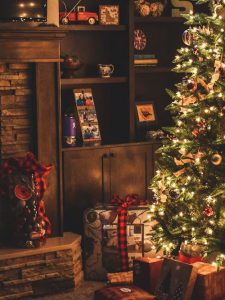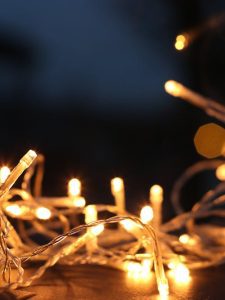During the cold and dark winter months, it’s natural that we want to add some light and warmth into our homes – especially to get into the festive spirit. But with all these new light and heat sources comes an increased risk of Christmas fire hazards.
No, this isn’t some elaborate hoax by the Grinch to force all your Christmas trees back into the attic. You can keep all your festive decorations up, just with the right precautions in place and a vigilant attitude towards safety hazards.
We’ll break down five of the most common Christmas fire hazards in this article (yes, even the ones we roast chestnuts on), and the small changes you can make to keep festivities high and fire risks low.
O candle-free Christmas tree
Though the decoration of Christmas trees with candles has become a more antiquated tradition – being largely replaced by Christmas lights – it’s important to note other fire hazards these wooden and waxy whim-whams may cause.
For starters, real trees need to be watered frequently, as a dry tree is more susceptible to catching fire. If you opt for artificial, ensure there is a fire-retardant label attached, as the risk of a fire is drastically reduced with these models.
Also keep in mind that the position of your tree may be a hazard – obviously if it’s near an open fire or a set of candles, but also a radiator. And it doesn’t matter how much it ties the room together, your tree should not block escape doors or paths.

In the event of a fire, it’s important to know what to do, which is why we offer specialised courses depending on who you are and what you want. From basic fire safety or care home fire safety courses to an array of online and classroom health and safety courses, we’ve got you covered.
Torched turkeys
Festive décor isn’t the only thing liable to ignite over the holidays, as it turns out kitchens can house even more Christmas fire hazards than your Christmas crackers. Not only are you balancing more stoves and foods than usual, but the evening bustle and booze can also add to the danger.
Family is important, but leaving unattended fires in the kitchen is one of the biggest safety risks at Christmas. Fully embrace the festivities once your cooking’s out of the way, and maybe postpone your eggnog cocktails until after the turkey’s been served.
Also take note of all the combustibles that may have found their way into the kitchen: oven gloves, tea towels, but also Christmas crackers, paper hats, and other trinkets that may have escaped the dinner table.

Lights through nights
Before your annual untangling of the ol’ reliable Christmas lights, ensure they carry the British Standard mark, or CE marking, as these indicate that required safety standards have been met. Modern LEDs tend to be the safer choice in most instances.
If everything’s in order, you then need to check for damages to each section of the decorations: individual bulbs, the plug, exposed wiring. Any faults here can contribute to a fire, especially with other flammable festive fodder nearby like your trees or wreaths.
At the end of the day, the Christmas lights are for you, not anyone else – unless you’re trying to deter some Wet Bandits.
Keeping them on overnight or when you’re out of the house might deflect any Scrooge allegations, but unattended electricals are a highly common fire hazard – so turn them off when you’re done with them.
In general, make sure your sockets aren’t overloaded, and avoid Frankenstein-ing your extension leads together, as these both increase the risk of electrical fires.

Christmas Fires and Christmas Fire Hazards
The quaint Christmas aesthetics of stockings over a fireplace, candles on trees, and grandad smoking his pipe mid-nap, are all perfectly suited for the warmth of movies and festive cards, but are probably best kept in the fictional world.
We’ve been over the whole candle-tree ordeal already, but take care when using a fireplace or an outdoor fire. Keep flammable objects far away, and ensure children aren’t able to harm themselves. Fire guards can usually resolve this, but also ensure you keep matches or lighters out of reach too.
And while it may be a little late (or early) for fireworks, they’re still commonly used around Christmas, and should be treated with the same care and diligence expected on Bonfire Night or New Year’s Day.
Unalarming smoke alarms
Fires are deadly with how quickly they spread, but it’s actually the smoke alarm which may be the sneakiest of all Christmas fire hazards, with breaks or power shortages often resulting in fatal fires.
Accidents happen, even when you take all the right precautions, and smoke alarms are there to alert you when fires would otherwise escape your notice. This is why a broken fire alarm can often result in more fatal accidents, with nearly twice as many deaths in the absence of one.
Keep their batteries fresh, and make sure to get them checked throughout the year. Also adhere to other standard fire safety rules: clear any escape routes (don’t leave presents strewn in the halls), get everyone out safely, and contact 999.
Festivity doesn’t need to be compromised for fire safety, and taking the right precautions means you can fully embrace the Christmas spirit without any anxieties getting in the way. Maybe just ensure your open fire has a fire guard for when it’s not roasting chestnuts this year.

























